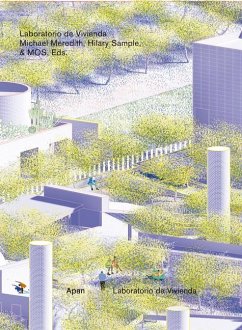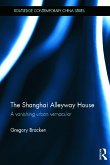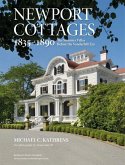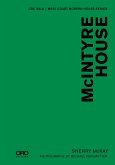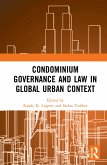Laboratorio de Vivienda presents the 32 projects selected and built, including research, drawings, and descriptions by the architects. It considers the problem of low-income housing by bringing thoughtful attention and expertise of architects, considering how these proposals, assembled into a collective, would work together toward creating not an estate but a community for Apan, presenting a model of Housing as a Garden. In 2017, Mexico's Institute for the National Fund for Workers' (INFONAVIT) Center for Research for Sustainable Development launched a program to solicit new approaches to affordable housing. To better understand the possibilities, and to better educate developers, workers, and students about the research, INFONAVIT engaged with MOS to develop a master plan for a campus of 32 built prototypes and design an education center to promote awareness and study of workers' housing typologies. The selection process revealed various categories and themes for which the projects could be classified. Some projects rethink the fundamentals of low-income housing's spatial organization (corridors, courtyards, roofs), some rework labor and construction, and some recast structure or material. The forms of these works are generally economical but, unlike early-modernist projects at the Weissenhof Estate, their attitude is not one of a radical break. If anything, these works relate to the vast, varied world of contemporary vernacular construction - the majority of the built world that Architecture glosses over. Each house responds to different climates, each house maintains their designed solar orientation, each house exhibits potential for growth by aggregation, repetition, or various strategies of extension, infill, and addition. All of the houses retain their individual identities within the larger campus. Presenting the 32 projects selected and built, including research, drawings, and descriptions by the architects, and an essay by Canadian Centre for Architecture Director Giovanna Borasi titled "A Large Urban Garden Where You Can Learn About Architecture," Laboratorio de Vivienda considers the problem of low-income housing by bringing thoughtful attention and expertise of architects, considering how these proposals, assembled into a collective, would work together toward creating not an estate but a community for Apan. For, given the limited resources of such works, each decision gains greater significance and has greater impact on the design and on the life of its inhabitants. With Contributions of: Carlos Zedillo Velasco Giovanna Borasi DVCH DeVillarChacon Arquitectos Frida Escobedo Dellekamp Arquitectos Derek Dellekamp & Jachen Schleich Rozana Montiel Estudio de Arquitectura Ambrosi Etchegaray Zooburbia Zago Architecture Taller Mauricio Rocha + Gabriela Carrillo Taller de Arquitectura X Griffin Enright Architects Tatiana Bilbao ESTUDIO Francisco Pardo Arquitecto Enrique Norten TEN Arquitectos Pita & Bloom BGP Arquitectura Zeller & Moye Accidental Estudio de Arquitectura Nuño - Mac Gregor - De Buen Arquitectos SC SAYA+ Arquitectos CanoVera Arquitectura Fernanda Canales RNThomsen ARCHITECTURE PRODUCTORA Agraz Arquitectos SC Rojkind Arquitectos Tactic-A GAETA-SPRINGALL Arquitectos TALLER ADG Taller 4:00 A.M. CRO Studio JC Arquitectura DCPP

